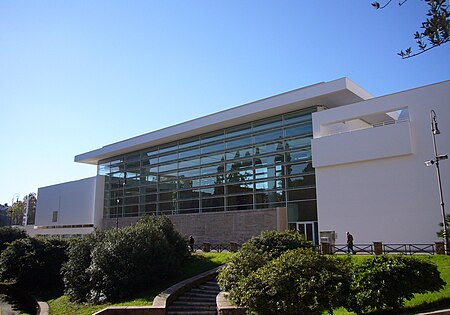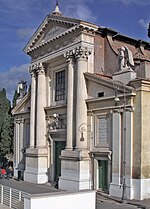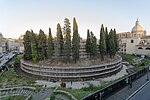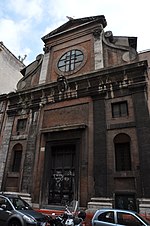Museum of the Ara Pacis
Archaeological museums in ItalyArt museums and galleries in RomeMuseum of the Ara PacisMuseums established in 2006Museums in Rome ... and 4 more
Museums of ancient Rome in ItalyRichard Meier buildingsRome R. IV Campo MarzioUse mdy dates from August 2013

The Museum of the Ara Pacis (Italian: Museo dell'Ara Pacis) belongs to the Sistema dei Musei in Comune of Rome (Italy); it houses the Ara Pacis of Augustus, an ancient monument that was initially inaugurated on 30 January 9 B.C.
Excerpt from the Wikipedia article Museum of the Ara Pacis (License: CC BY-SA 3.0, Authors, Images).Museum of the Ara Pacis
Lungotevere in Augusta, Rome Municipio Roma I
Geographical coordinates (GPS) Address Phone number Website External links Nearby Places Show on map
Geographical coordinates (GPS)
| Latitude | Longitude |
|---|---|
| N 41.90608 ° | E 12.47544 ° |
Address
Museo dell'Ara Pacis
Lungotevere in Augusta
00100 Rome, Municipio Roma I
Lazio, Italy
Open on Google Maps










